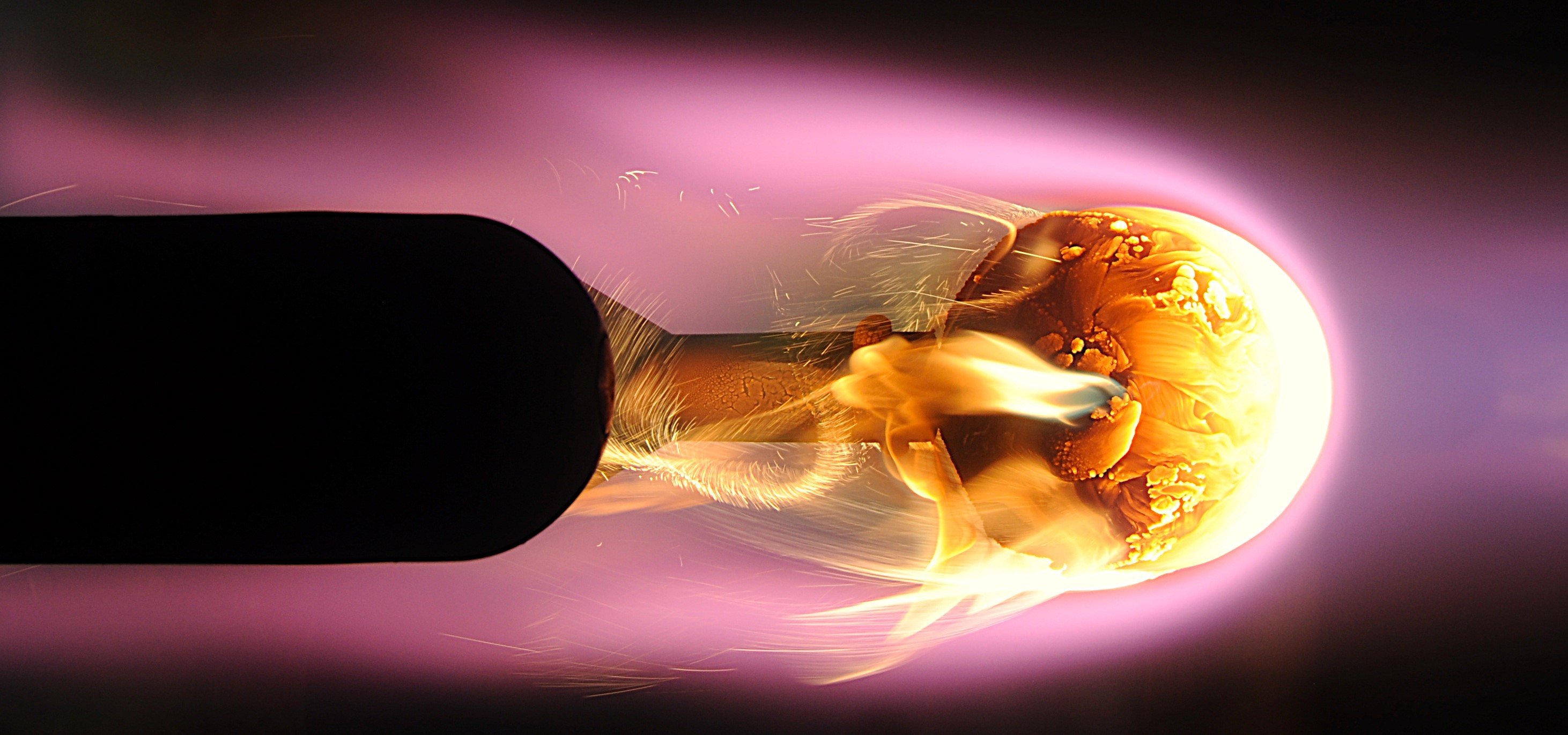ERCOFTAC PC Belgium
The Plasmatron Replicates the Reentry Conditions for Zero Trash in Space, Starting with Fire and Ending in Ash
Authors: Joseph El Rassi, Bernd Helber
(von Karman Institute for Fluid Dynamics, Belgium)

Scientific Abstract
The increasing volume of space activities and the growing accumulation of debris in low Earth orbit necessitate the study of atmospheric entry behavior for these objects. In 2015, Klinkrad [1] estimated that approximately 34,600 space debris objects larger than 10 cm were orbiting Earth. According to Lips [2], the current re-entry rate for man-made objects is about 400 tons per year. Most of these objects, not designed to withstand the extreme conditions of re-entry, are destroyed upon atmospheric entry. However, some survive the intense heat flux during uncontrolled re-entry, potentially reaching the Earth's surface and posing a risk to human safety. Therefore, ensuring the complete destruction of such debris during re-entry is critical to mitigating risks to humankind. During atmospheric entry, decommissioned spacecraft and satellite components undergo significant aerodynamic heating, as a large amount of kinetic energy is converted into thermal energy. This typically causes the vehicle to break up into several parts, which are then further degraded by the high-enthalpy flow. To address these concerns, the Design for Demise (D4D) approach is implemented at the system design level by satellite manufacturers, ESA, and launch providers. D4D ensures that objects comply with safety risk requirements through passive, uncontrolled re-entry mechanisms that enhance their demise.
The challenge lies in the highly variable nature of space debris, including differences in size, shape, and material composition, which complicates the identification and modeling of the phenomena involved in their destruction. A particularly problematic case is Carbon Fibre Reinforced Polymer (CFRP) materials, which are similar to the components of Thermal Protection Systems (TPS) used on spacecraft. As a result, objects made from CFRP, such as Composite Overwrapped Pressure Vessels (COPVs), are often capable of surviving re-entry. For instance, the pressure vessel from the upper stage of the Vega launcher recently re-entered Earth's atmosphere and landed almost intact in India. These spacecraft components typically consist of several layers of CFRP wrapped around a liner and bonded with a thin adhesive layer.
Under ESA's Clean Space initiative, a range of research programs has been launched to improve the understanding of spacecraft breakup and demise during uncontrolled Earth re-entry. This could be very useful when retiring satellites at the end of their mission. As part of these efforts, an intensive experimental campaign was conducted at the Von Karman Institute (VKI) to assess the demisability of COPVs under representative re-entry conditions. The tests were carried out in the world's most powerful inductively coupled plasma facility, which simulates the extreme conditions of re-entry for such materials in a laboratory setting. The facility is equipped with state-of-the-art instrumentation to map the thermal response of the tested materials, providing accurate experimental data that will help calibrate and establish higher fidelity simulations for re-entry modeling.
A stagnation point (the cylinder parallel to the flow) and a sideway (the cylinder perpendicular to the flow) configuration were tested, some samples for each configuration with a titanium liner and others with a graphite liner for comparison. All samples were wrapped with carbon fibers. The vessels were subjected to plasma testing under various pressures, heat flux, and test durations replicating reentry conditions. Intrusive and non-intrusive techniques were used to obtain the internal temperature, surface temperature, and gas emission. Demise (through hole) was achieved with the titanium liner samples. The graphite liner samples survived the test conditions. In both cases, the carbon wrapping degraded away at the stagnation point but stayed intact around the rest of the samples. The findings highlights that special care must be considered when launching such material into space because it could land back on earth as a whole during reentry at the end of the mission.
References
[1] H. Klinkard. The hazard of orbital debris, Handbook of cosmic hazards and Planetary Defense. Springer, 2015.
[2] T. Lips. Engineering models for destruction analysis of spacecraft during re-entry. In von Karman Lecture Series, 2016.
Related publications
El Rassi, J., B. Helber, P. Schrooyen, A. Turchi, P. Jorge, T. Magin, and L. Walpot. "Plasma testing of miniaturized Composite Overwrapped Pressure Vessels in reentry conditions." In Aerospace Europe Joint 10th EUCASS-9th CEAS Conference, pp. 9-13. 2023.
El Rassi, J., S. Holum, L. Sombaert, A. Viladegut, L. Walpot, O. Chazot, and B. Helber. "Upgraded VKI Plasmatron Capabilities with Supersonic Nozzles for Extended Material Characterization Methods." Sampe Journal 60, no. 2 (2024).
